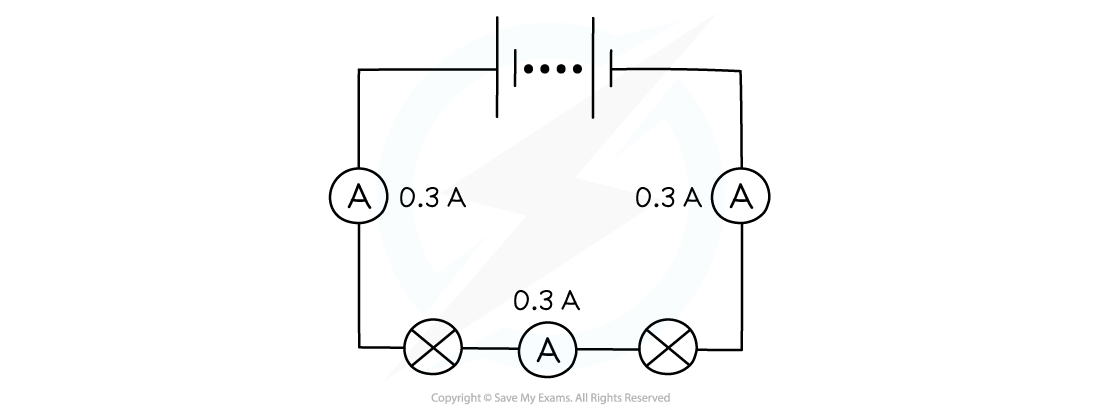Series & Parallel Circuits
Current
- In a series circuit, the current is the same for all components
- In a parallel circuit, the current is split across the different branches (or junction). The total current into a junction must equal the total current out of a junction
- The amount of current in each branch depends on the total resistance of the components within that branch
Worked example
For the circuit below, state the readings of ammeters A1, A2 and A3.

Potential Difference
- In a series circuit, the e.m.f of the power supply is shared amongst all the components in different amounts, depending on their resistance
- In a parallel circuit, the voltage of all the components in each branch is equal to the e.m.f of the power supply
Worked example
For the circuit below, state the readings of the voltmeters V1, V2 and V3.All the lamps and resistors have the same resistance.

- Cells can also be connected in series or parallel
- The total voltage of the combined cells can be calculated in the same way as voltage
- If the cells are connected in series, the total voltage between the ends of the chain of cells is the sum of the potential difference across each cell
- If the cells are connected in parallel, the total voltage across the arrangement is the same as for one cell

- A summary of the current, voltage and resistance within a series and parallel circuit are summarised below:
Table of Voltage, Current & Resistance in Series & Parallel Circuits

Exam Tip
The best way to practice these calculations is to understand why you have made a mistake. Common mistakes are:
- Thinking the current is the same through every branch in a parallel circuit
- Thinking the voltage is the same through all components in a series circuit
- Not taking into account multiple resistors
- Not calculating the total resistance using the appropriate parallel or series resistance equation
- The sum of the voltages of all the components in a series circuit not adding up to the e.m.f of the supply
- The current into a junction not being equal to the current out of a junction (Kirchoff’s First Law)
Don’t be afraid to annotate circuit diagrams to help with this. The more information you have about all the components, the easier it is to calculate values that are missing







